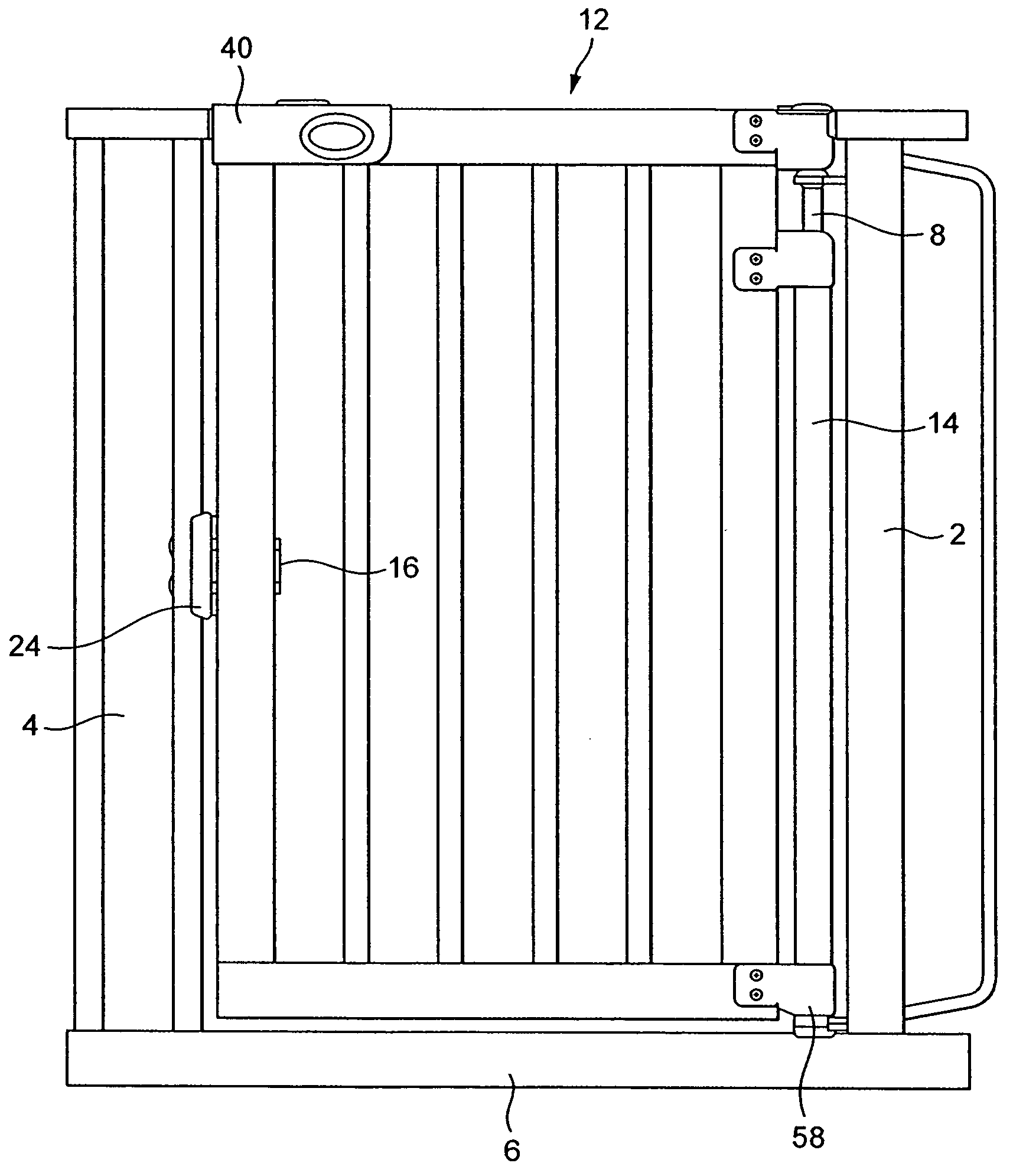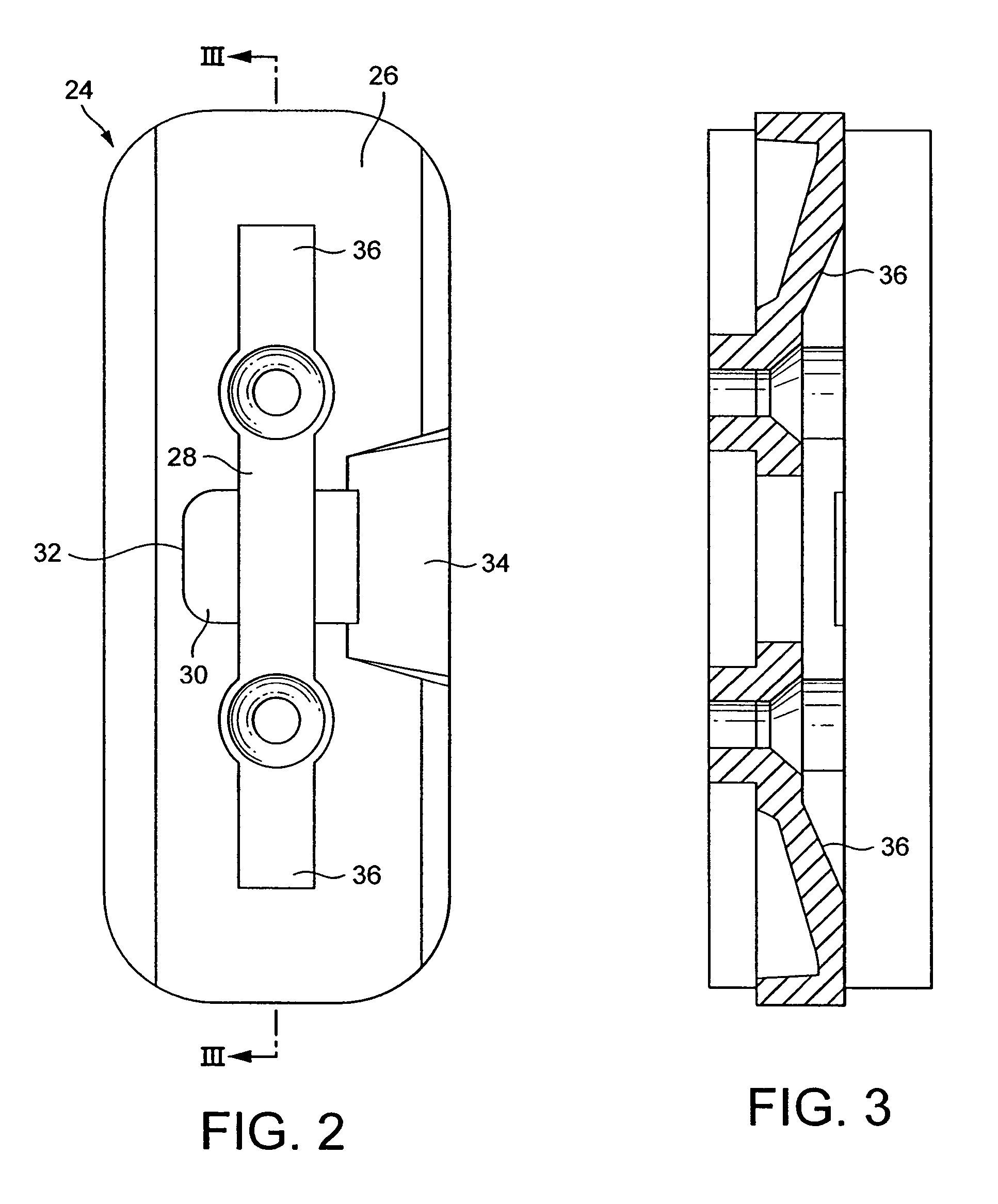Safety gate assembly
a gate and safety technology, applied in the direction of door/window fittings, fastening means, building components, etc., can solve the problems of gate moving through the fully closed position and failing to latch
- Summary
- Abstract
- Description
- Claims
- Application Information
AI Technical Summary
Benefits of technology
Problems solved by technology
Method used
Image
Examples
Embodiment Construction
[0026]The gate assembly comprises a generally U-shaped frame comprising two vertically extending limbs 2, 4, the lower ends of which are connected by a horizontal base 6. In use, the frame is secured in position in a doorway, passage or stairway by any conventional means, such as screw threaded rods, which are received in holes at the top and bottom of each limb 2, 4 and carry clamping members at their free ends (not shown). At its upper end, the limb 2 carries a downwardly extending hinge pin 8 and at the end of the base 6 adjacent the limb 2, the base carries an upwardly extending hinge pin 10 (seen in FIG. 6). Pivotally mounted within the opening defined by the frame is a gate 12. On its side adjacent the limb 2, the gate carried a hollow, open-ended hinge tube 14 in which the hinge pins 8 and 10 are rotatably and longitudinally slidably received. The tube 14 and hinge pins 8 and 10 constitute the pivotal connection between the frame and the gate.
[0027]As best seen in FIG. 4, on ...
PUM
 Login to View More
Login to View More Abstract
Description
Claims
Application Information
 Login to View More
Login to View More - R&D
- Intellectual Property
- Life Sciences
- Materials
- Tech Scout
- Unparalleled Data Quality
- Higher Quality Content
- 60% Fewer Hallucinations
Browse by: Latest US Patents, China's latest patents, Technical Efficacy Thesaurus, Application Domain, Technology Topic, Popular Technical Reports.
© 2025 PatSnap. All rights reserved.Legal|Privacy policy|Modern Slavery Act Transparency Statement|Sitemap|About US| Contact US: help@patsnap.com



